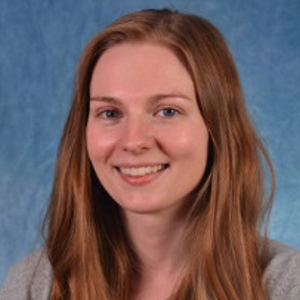
Uniting technology and discovery
Growing up with two physics teachers as parents, Lan Huang naturally was drawn to science. In college, she majored in chemistry and later earned a Ph.D. in analytical chemistry, studying insulin secretion from single beta cells.
Huang moved to San Francisco to start her postdoctoral fellowship at the University of California in1996, a move that coincided with the rise of mass spectrometry. She quickly fell in love with the new field of proteomics.

For several years, Huang worked at UCSF as a staff scientist in the National Insitutes of Health mass spectrometry national resource, collaborating with numerous labs. In 2003, she established her own lab at the University of California, Irvine, to develop new proteomics tools to study the ubiquitin proteasome system, holding a joint appointment until 2012, when she was appointed professor of physiology and biophysics in the university's medical school.
The proteasome — a large multiprotein complex — was the perfect challenge for Huang. As protein degradation is disrupted in numerous diseases, the pathway serves as a promising pharmaceutical target. The proteasome regulates many essential physiological processes in cells — highlighting its biological importance but complicating research studies because many proteins can interact with the complex at varying times.
Early in Huang’s career, few labs used mass spectrometry to analyze protein complexes. Studying protein–protein interactions can be difficult; many complexes within the cell are dynamic, showing tight spatiotemporal regulation. As a result, the Huang lab focused on developing cross-linking strategies to stabilize protein–protein interactions, freezing a moment in time.
Huang summarizes her research program as a combination of new methodology and biological discovery.
“You try to address some questions and you realize that there is some technology that needs to be developed,” Huang said. “Then once you develop some new technology, you try to apply it. … It’s a new push in both directions.”
Mapping protein interactomes
Lan Huang’s laboratory continues to create new strategies to study protein–protein interactions through cross-linking mass spectrometry, or XL-MS.
Recently, her lab developed a set of photoreactive, MS-cleavable cross-linking reagents. Unlike traditional cross-linking approaches, these photoreactive reagents can target any amino acid. Furthermore, these reagents are MS-cleavable, allowing the cross-linked peptides to be separated during collision-induced dissociation to simplify sequencing and peptide identification, a big advantage when working with complex samples.
Huang’s lab also created crosslinking reagents that are membrane permeable and enrichable, allowing researchers to cross-link protein complexes within cells. This achievement facilitates the identification of endogenous protein–protein interactions.
Ultimately, Huang hopes to use these tools to create detailed protein interaction networks in clinical samples. These advances also have implications for human health, accelerating the study of protein dysregulation during disease.
“Hopefully the information generated will help us to understand the molecular basis for disease development,” Huang said, “and provide some hot spots to allow us to develop protein interaction–driven therapeutics.”
Enjoy reading ASBMB Today?
Become a member to receive the print edition four times a year and the digital edition monthly.
Learn moreGet the latest from ASBMB Today
Enter your email address, and we’ll send you a weekly email with recent articles, interviews and more.
Latest in People
People highlights or most popular articles

In memoriam: Alan G. Goodridge
He made pioneering discoveries on lipid metabolism and was an ASBMB member since 1971.

Alrubaye wins research and teaching awards
He was honored at the NACTA 2025 conference for the Educator Award and at the U of A State and National Awards reception for the Faculty Gold Medal.

Designing life’s building blocks with AI
Tanja Kortemme, a professor at the University of California, San Francisco, will discuss her research using computational biology to engineer proteins at the 2026 ASBMB Annual Meeting.

Jordahl named Gilliam Fellow
He will receive three years of funding to support his thesis research.

Bibel named assistant professor
She began her position at Loyola Marymount University in August 2025.

Unraveling the language of histones
Philip Cole presented his research on how posttranslational modifications to histones are involved in gene expression and how these modifications could be therapeutically targeted to treat diseases like cancer.

